Throughout an investigation of rivers in Bulgaria, an isolate of Phytophthora (RLKam2016/61c) was recovered and initially recognized as Phytophthora sansomeana primarily based on inside transcribed spacer area (ITS) sequence information.
Nevertheless, the sequencing of the mitochondrial cytochrome c oxidase subunit I (cox1) gene revealed excessive similarity to Phytophthora sp. kelmania, and sequencing of different nuclear areas (β-tubulin [Btub] and translation elongation issue 1-alpha [tef1]) revealed a big variety of polymorphisms, indicating a attainable hybridization occasion.
Extra cloning and sequencing of the nuclear ITS and Btub areas confirmed the presence of two distinct teams of alleles, one in every of which was extremely much like P. sansomeana, whereas the opposite was much like a species advanced that features Phytophthora sp. kelmania. Due to this fact, the brand new hybrid was named Phytophthora × sansomeana.
It’s characterised by quick development on V8 juice agar (V8A) and carrot agar (CA), average aerial mycelium with radiate sample of the colonies and comparatively slower development fee on malt extract agar (MEA) and potato dextrose agar (PDA), and petaloid to rosaceous sample of the colonies with fluffy aerial mycelium. The optimum development temperature for P. × sansomeana was at 25 C, with a median development fee of 9 mm per day. Considerable sporangium formation of the isolate in spring water was noticed, however the hybrid was sterile in tradition.
Pathogenicity analyses of the hybrid have been carried out compared with probably the most carefully associated subclade 8a species from our assortment, P. pseudocryptogea. The inhibition impact on the basis development of younger seedlings of two legumes, frequent pea and vetch, in addition to on cuttings of the decorative plant coleus induced by each phytopathogens was important. No impact of both the brand new hybrid or P. pseudocryptogea on the expansion of maize seedlings was noticed.
Pure genetic range within the potato resistance gene RB confers suppression avoidance from Phytophthora effector IPI-O4
RB is a potato gene that gives resistance to a broad spectrum of genotypes of the late blight pathogen Phytophthora infestans. RB belongs to the CC-NB-LRR (coiled-coil, nucleotide-binding, leucine-rich repeat) class of resistance (R) genes, a serious part of the plant immune system.
The RB protein detects the presence of Class I and II IPI-O effectors from P. infestans to provoke a hypersensitive resistance response, however this exercise is suppressed within the presence of the Class III effector IPI-O4. Utilizing pure genetic variation of RB inside potato wild family, we recognized two amino acids within the CC area that alter interactions wanted for suppression of resistance by IPI-O4.
We have now discovered that separate modification of those amino acids in RB can diminish or develop the resistance functionality of this protein in opposition to P. infestans in each Nicotiana benthamiana and potato. Our outcomes show that elevated data of the molecular mechanisms that decide resistance activation and R protein suppression by effectors may be utilized to tailor-engineer genes with the potential to offer elevated sturdiness.
Focusing on of anti-microbial proteins to the hyphal floor amplifies safety of crop vegetation in opposition to Phytophthora pathogens
Phytophthora pathogens are a persistent menace to the world’s commercially essential agricultural crops, together with potato and soybean. Present methods geared toward lowering crop losses rely totally on illness resistance breeding and chemical pesticides, which may be often overcome by the speedy adaptive evolution of pathogens.
Transgenic crops with intrinsic illness resistance supply a promising different and proceed to be developed. Right here, we used Phytophthora-derived PI3P (phosphatidylinositol 3-phosphate) as a novel management goal, utilizing proteins that bind this lipid to direct secreted antimicrobial peptides and proteins (AMPs) to the floor of the pathogen.
In transgenic Nicotiana benthamiana, soybean, and potato vegetation, considerably enhanced resistance to totally different pathogen isolates was achieved by expression of two AMPs (GAFP1 or GAFP3 from the Chinese language medicinal herb Gastrodia elata) fused with a PI3P-specific binding area (FYVE). Utilizing the soybean pathogen P. sojae for example, we demonstrated that the FYVE area may enhance the actions of the GAFPs in a number of unbiased assays, together with in vitro, in vivo, and in planta.
Mutational evaluation of the PI3K1 and PI3K2 genes of this pathogen confirmed that the improved actions of the focused GAFPs have been correlated with PI3P ranges within the pathogen. The technique could possibly be used in opposition to Phytophthora pathogens of many vegetation, and for different kinds of plant pathogens with distinctive targets.
Late blight in tomato: insights into the pathogenesis of the aggressive pathogen Phytophthora infestans and future analysis priorities
This assessment supplies insights into the molecular interactions between Phytophthora infestans and tomato and highlights analysis gaps that want additional consideration. Late blight in tomato is attributable to the oomycota hemibiotroph Phytophthora infestans, and this illness represents a world menace to tomato farming.
The pathogen is cumbersome to regulate due to its fast-evolving nature, capability to beat host resistance and inefficient pure resistance obtained from the obtainable tomato germplasm. To realize profitable management over this pathogen, the molecular pathogenicity of P. infestans and key factors of vulnerability within the host plant immune system should be understood.
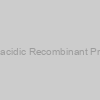 FGF acidic Recombinant Protein |
|
40-493-001mg |
ProSci |
0.01 mg |
EUR 311.1 |
|
Description: FGF-acidic is one of 23 known members of the FGF family. Proteins of this family play a central role during prenatal development and postnatal growth and regeneration of a variety of tissues, by promoting cellular proliferation and differentiation. FGF-acidic is a non-glycosylated heparin binding growth factor that is expressed in the brain, kidney, retina, smooth muscle cells, bone matrix, osteoblasts, astrocytes and endothelial cells. FGF-acidic has the ability to signal through all the FGF receptors. Recombinant murine FGF-acidic is a 15.9 kDa protein consisting of 141 amino acid residues. |
 FGF acidic Recombinant Protein |
|
40-493-005mg |
ProSci |
0.05 mg |
EUR 437.1 |
|
Description: FGF-acidic is one of 23 known members of the FGF family. Proteins of this family play a central role during prenatal development and postnatal growth and regeneration of a variety of tissues, by promoting cellular proliferation and differentiation. FGF-acidic is a non-glycosylated heparin binding growth factor that is expressed in the brain, kidney, retina, smooth muscle cells, bone matrix, osteoblasts, astrocytes and endothelial cells. FGF-acidic has the ability to signal through all the FGF receptors. Recombinant murine FGF-acidic is a 15.9 kDa protein consisting of 141 amino acid residues. |
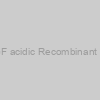 Rat FGF acidic Recombinant Protein |
|
R20-018 |
ReliaTech |
50 µg |
EUR 196.35 |
|
Description: FGF-acidic is one of 23 known members of the FGF family. Proteins of this family play a central role during prenatal development, postnatal growth and regeneration of a variety of tissues, by promoting cellular proliferation and differentiation. FGF-acidic is a non-glycosylated heparin binding growth factor that is expressed in the brain, kidney, retina, smooth muscle cells, bone matrix, osteoblasts, astrocytes and endothelial cells. FGF-acidic has the ability to signal through all the FGF receptors. Recombinant rat FGF-acidic is a 15.9 kDa protein consisting of 141 amino acid residues. |
 Rat FGF acidic Recombinant Protein |
|
R20-018S |
ReliaTech |
10 µg |
EUR 92.4 |
|
Description: FGF-acidic is one of 23 known members of the FGF family. Proteins of this family play a central role during prenatal development, postnatal growth and regeneration of a variety of tissues, by promoting cellular proliferation and differentiation. FGF-acidic is a non-glycosylated heparin binding growth factor that is expressed in the brain, kidney, retina, smooth muscle cells, bone matrix, osteoblasts, astrocytes and endothelial cells. FGF-acidic has the ability to signal through all the FGF receptors. Recombinant rat FGF-acidic is a 15.9 kDa protein consisting of 141 amino acid residues. |
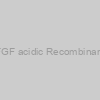 Human FGF acidic Recombinant Protein |
|
100-016 |
ReliaTech |
50 µg |
EUR 196.35 |
|
Description: FGF-acidic is one of 23 known members of the FGF family. Proteins of this family play a central role during prenatal development and postnatal growth and regeneration of a variety of tissues, by promoting cellular proliferation and differentiation. FGF-acidic is a non-glycosylated heparin binding growth factor that is expressed in the brain, kidney, retina, smooth muscle cells, bone matrix, osteoblasts, astrocytes and endothelial cells. FGF-acidic has the ability to signal through all the FGF receptors. Recombinant human FGF-acidic is a 15.8 kDa protein consisting of 140 amino acid residues. |
 Human FGF acidic Recombinant Protein |
|
100-016S |
ReliaTech |
10 µg |
EUR 92.4 |
|
Description: FGF-acidic is one of 23 known members of the FGF family. Proteins of this family play a central role during prenatal development and postnatal growth and regeneration of a variety of tissues, by promoting cellular proliferation and differentiation. FGF-acidic is a non-glycosylated heparin binding growth factor that is expressed in the brain, kidney, retina, smooth muscle cells, bone matrix, osteoblasts, astrocytes and endothelial cells. FGF-acidic has the ability to signal through all the FGF receptors. Recombinant human FGF-acidic is a 15.8 kDa protein consisting of 140 amino acid residues. |
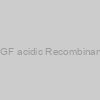 Mouse FGF acidic Recombinant Protein |
|
M10-045 |
ReliaTech |
50 µg |
EUR 196.35 |
|
Description: FGF-acidic is one of 23 known members of the FGF family. Proteins of this family play a central role during prenatal development and postnatal growth and regeneration of a variety of tissues, by promoting cellular proliferation and differentiation. FGF-acidic is a non-glycosylated heparin binding growth factor that is expressed in the brain, kidney, retina, smooth muscle cells, bone matrix, osteoblasts, astrocytes and endothelial cells. FGF-acidic has the ability to signal through all the FGF receptors. Recombinant mouse FGF-acidic is a 15.9 kDa protein consisting of 141 amino acid residues. |
 Mouse FGF acidic Recombinant Protein |
|
M10-045S |
ReliaTech |
10 µg |
EUR 92.4 |
|
Description: FGF-acidic is one of 23 known members of the FGF family. Proteins of this family play a central role during prenatal development and postnatal growth and regeneration of a variety of tissues, by promoting cellular proliferation and differentiation. FGF-acidic is a non-glycosylated heparin binding growth factor that is expressed in the brain, kidney, retina, smooth muscle cells, bone matrix, osteoblasts, astrocytes and endothelial cells. FGF-acidic has the ability to signal through all the FGF receptors. Recombinant mouse FGF-acidic is a 15.9 kDa protein consisting of 141 amino acid residues. |
) Recombinant Glial Fibrillary Acidic Protein (GFAP) |
|
RPU41608-100ug |
Biomatik Corporation |
100ug |
EUR 431.2 |
) Recombinant Glial Fibrillary Acidic Protein (GFAP) |
|
RPU41608-50ug |
Biomatik Corporation |
50ug |
EUR 346.5 |
) Recombinant Glial Fibrillary Acidic Protein (GFAP) |
|
RPU41609-100ug |
Biomatik Corporation |
100ug |
EUR 431.2 |
) Recombinant Glial Fibrillary Acidic Protein (GFAP) |
|
RPU41609-50ug |
Biomatik Corporation |
50ug |
EUR 346.5 |
) Recombinant Glial Fibrillary Acidic Protein (GFAP) |
|
RPU41610-100ug |
Biomatik Corporation |
100ug |
EUR 419.1 |
) Recombinant Glial Fibrillary Acidic Protein (GFAP) |
|
RPU41610-50ug |
Biomatik Corporation |
50ug |
EUR 336.6 |
) Recombinant Glial Fibrillary Acidic Protein (GFAP) |
|
RPU41611-100ug |
Biomatik Corporation |
100ug |
EUR 419.1 |
) Recombinant Glial Fibrillary Acidic Protein (GFAP) |
|
RPU41611-50ug |
Biomatik Corporation |
50ug |
EUR 336.6 |
) Recombinant Glial Fibrillary Acidic Protein (GFAP) |
|
RPU41612-100ug |
Biomatik Corporation |
100ug |
EUR 419.1 |
) Recombinant Glial Fibrillary Acidic Protein (GFAP) |
|
RPU41612-50ug |
Biomatik Corporation |
50ug |
EUR 336.6 |
) Recombinant Glial Fibrillary Acidic Protein (GFAP) |
|
RPU50610-100ug |
Biomatik Corporation |
100ug |
EUR 431.2 |
) Recombinant Glial Fibrillary Acidic Protein (GFAP) |
|
RPU50610-50ug |
Biomatik Corporation |
50ug |
EUR 346.5 |
) Recombinant Glial Fibrillary Acidic Protein (GFAP) |
|
RPU55169-100ug |
Biomatik Corporation |
100ug |
EUR 431.2 |
) Recombinant Glial Fibrillary Acidic Protein (GFAP) |
|
RPU55169-50ug |
Biomatik Corporation |
50ug |
EUR 346.5 |
) Recombinant Glial Fibrillary Acidic Protein (GFAP) |
|
RPU55170-100ug |
Biomatik Corporation |
100ug |
EUR 431.2 |
) Recombinant Glial Fibrillary Acidic Protein (GFAP) |
|
RPU55170-50ug |
Biomatik Corporation |
50ug |
EUR 346.5 |
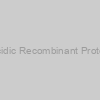 Mouse FGF acidic Recombinant Protein Lyophilized |
|
IMSFGFARLY10UG |
Innovative research |
each |
EUR 341 |
|
|
|
Description: Mouse FGF acidic Recombinant Protein Lyophilized |
) Recombinant Glial Fibrillary Acidic Protein (GFAP) |
|
RPA068Hu01 |
Cloud-Clone |
10ug |
EUR 140 |
) Recombinant Glial Fibrillary Acidic Protein (GFAP) |
|
4-RPA068Hu01 |
Cloud-Clone |
-
Ask for price
-
Ask for price
-
Ask for price
-
Ask for price
-
Ask for price
-
Ask for price
-
Ask for price
|
- 100 ug
- 10ug
- 1 mg
- 200 ug
- 500 ug
- 50ug
- 5 mg
|
|
|
|
Description: Recombinant Human Glial Fibrillary Acidic Protein expressed in: E.coli |
) Recombinant Glial Fibrillary Acidic Protein (GFAP) |
|
RPA068Hu02 |
Cloud-Clone |
10ug |
EUR 140 |
) Recombinant Glial Fibrillary Acidic Protein (GFAP) |
|
4-RPA068Hu02 |
Cloud-Clone |
-
Ask for price
-
Ask for price
-
Ask for price
-
Ask for price
-
Ask for price
-
Ask for price
-
Ask for price
|
- 100 ug
- 10ug
- 1 mg
- 200 ug
- 500 ug
- 50ug
- 5 mg
|
|
|
|
Description: Recombinant Human Glial Fibrillary Acidic Protein expressed in: E.coli |
) Recombinant Glial Fibrillary Acidic Protein (GFAP) |
|
RPA068Hu04 |
Cloud-Clone |
10ug |
EUR 142 |
) Recombinant Glial Fibrillary Acidic Protein (GFAP) |
|
RPA068Hu05 |
Cloud-Clone |
10ug |
EUR 143 |
) Recombinant Glial Fibrillary Acidic Protein (GFAP) |
|
RPA068Mu01 |
Cloud-Clone |
10ug |
EUR 136 |
) Recombinant Glial Fibrillary Acidic Protein (GFAP) |
|
4-RPA068Mu01 |
Cloud-Clone |
-
Ask for price
-
Ask for price
-
Ask for price
-
Ask for price
-
Ask for price
-
Ask for price
-
Ask for price
|
- 100 ug
- 10ug
- 1 mg
- 200 ug
- 500 ug
- 50ug
- 5 mg
|
|
|
|
Description: Recombinant Mouse Glial Fibrillary Acidic Protein expressed in: E.coli |
) Recombinant Glial Fibrillary Acidic Protein (GFAP) |
|
RPA068Mu02 |
Cloud-Clone |
10ug |
EUR 136 |
) Recombinant Glial Fibrillary Acidic Protein (GFAP) |
|
4-RPA068Mu02 |
Cloud-Clone |
-
Ask for price
-
Ask for price
-
Ask for price
-
Ask for price
-
Ask for price
-
Ask for price
-
Ask for price
|
- 100 ug
- 10ug
- 1 mg
- 200 ug
- 500 ug
- 50ug
- 5 mg
|
|
|
|
Description: Recombinant Mouse Glial Fibrillary Acidic Protein expressed in: E.coli |
) Recombinant Glial Fibrillary Acidic Protein (GFAP) |
|
RPA068Mu03 |
Cloud-Clone |
10ug |
EUR 136 |
) Recombinant Glial Fibrillary Acidic Protein (GFAP) |
|
4-RPA068Mu03 |
Cloud-Clone |
-
Ask for price
-
Ask for price
-
Ask for price
-
Ask for price
-
Ask for price
-
Ask for price
-
Ask for price
|
- 100 ug
- 10ug
- 1 mg
- 200 ug
- 500 ug
- 50ug
- 5 mg
|
|
|
|
Description: Recombinant Mouse Glial Fibrillary Acidic Protein expressed in: E.coli |
) Recombinant Glial Fibrillary Acidic Protein (GFAP) |
|
RPA068Mu04 |
Cloud-Clone |
10ug |
EUR 140 |
) Recombinant Glial Fibrillary Acidic Protein (GFAP) |
|
4-RPA068Mu04 |
Cloud-Clone |
-
Ask for price
-
Ask for price
-
Ask for price
-
Ask for price
-
Ask for price
-
Ask for price
-
Ask for price
|
- 100 ug
- 10ug
- 1 mg
- 200 ug
- 500 ug
- 50ug
- 5 mg
|
|
|
|
Description: Recombinant Mouse Glial Fibrillary Acidic Protein expressed in: E.coli |
) Recombinant Glial Fibrillary Acidic Protein (GFAP) |
|
RPA068Ra01 |
Cloud-Clone |
10ug |
EUR 140 |
) Recombinant Glial Fibrillary Acidic Protein (GFAP) |
|
4-RPA068Ra01 |
Cloud-Clone |
-
Ask for price
-
Ask for price
-
Ask for price
-
Ask for price
-
Ask for price
-
Ask for price
-
Ask for price
|
- 100 ug
- 10ug
- 1 mg
- 200 ug
- 500 ug
- 50ug
- 5 mg
|
|
|
|
Description: Recombinant Rat Glial Fibrillary Acidic Protein expressed in: E.coli |
) Recombinant Glial Fibrillary Acidic Protein (GFAP) |
|
RPA068Ra02 |
Cloud-Clone |
10ug |
EUR 140 |
) Recombinant Glial Fibrillary Acidic Protein (GFAP) |
|
4-RPA068Ra02 |
Cloud-Clone |
-
Ask for price
-
Ask for price
-
Ask for price
-
Ask for price
-
Ask for price
-
Ask for price
-
Ask for price
|
- 100 ug
- 10ug
- 1 mg
- 200 ug
- 500 ug
- 50ug
- 5 mg
|
|
|
|
Description: Recombinant Rat Glial Fibrillary Acidic Protein expressed in: E.coli |
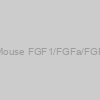 Recombinant Mouse FGF1/FGFa/FGF acidic Protein |
|
E40KMP1629 |
EnoGene |
20ug |
EUR 495 |
) Recombinant Human Acidic mammalian chitinase (CHIA) |
|
CSB-EP874858HU |
Cusabio |
4640 mg |
Ask for price |
) Recombinant Human Acidic mammalian chitinase(CHIA) |
|
AP76911 |
SAB |
1mg |
EUR 1978 |
|
|
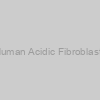 Recombinant Human Acidic Fibroblast Growth Factor |
|
45101 |
Genovis AB |
20ug |
EUR 341 |
) Recombinant Cryptochrome 1 (CRY1) |
|
RPC407Hu01 |
Cloud-Clone |
10ug |
EUR 168 |
) Recombinant Cryptochrome 1 (CRY1) |
|
4-RPC407Hu01 |
Cloud-Clone |
-
Ask for price
-
Ask for price
-
Ask for price
-
Ask for price
-
Ask for price
-
Ask for price
-
Ask for price
|
- 100 ug
- 10ug
- 1 mg
- 200 ug
- 500 ug
- 50ug
- 5 mg
|
|
|
|
Description: Recombinant Human Cryptochrome 1 expressed in: E.coli |
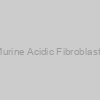 Recombinant Murine Acidic Fibroblast Growth Factor |
|
AP60184 |
SAB |
100ug |
EUR 449 |
|
|
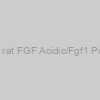 Recombinant rat FGF Acidic/Fgf1 Protein, No Tag |
|
E40PO135 |
EnoGene |
20ug |
EUR 495 |
) Recombinant FGF acidic Protein (Phe 16-Asp 155) |
|
VAng-1552Lsx-1mg |
Creative Biolabs |
1 mg |
EUR 2370 |
|
Description: Human FGF acidic is expressed in HEK 293 cells. (Uniprot ID: NP_000791) |
) Recombinant FGF acidic Protein (Phe 16-Asp 155) |
|
VAng-1552Lsx-200g |
Creative Biolabs |
200 µg |
EUR 654 |
|
Description: Human FGF acidic is expressed in HEK 293 cells. (Uniprot ID: NP_000791) |
 Recombinant human Acidic repeat-containing protein |
|
P2170 |
FN Test |
100ug |
Ask for price |
|
|
|
Description: Recombinant protein for human Acidic repeat-containing protein |
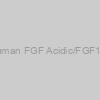 Recombinant Human FGF Acidic/FGF1 Protein, No Tag |
|
E40KMH1083 |
EnoGene |
20ug |
EUR 495 |
 Recombinant Human FGF Acidic/FGF1 Protein, No Tag |
|
E40KMH1084 |
EnoGene |
20ug |
EUR 495 |
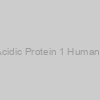 Proline-Rich Acidic Protein 1 Human Recombinant |
|
rAP-3996 |
Angio Proteomie |
Inquiry |
Ask for price |
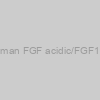 Recombinant human FGF acidic/FGF1 Protein, His Tag |
|
E40KMP1355 |
EnoGene |
20ug |
EUR 495 |
) Recombinant Fibroblast Growth Factor 1, Acidic (FGF1) |
|
RPU41430-100ug |
Biomatik Corporation |
100ug |
EUR 537.9 |
) Recombinant Fibroblast Growth Factor 1, Acidic (FGF1) |
|
RPU41430-1mg |
Biomatik Corporation |
1mg |
EUR 2380.3 |
) Recombinant Fibroblast Growth Factor 1, Acidic (FGF1) |
|
RPU41430-50ug |
Biomatik Corporation |
50ug |
EUR 431.2 |
) Recombinant Fibroblast Growth Factor 1, Acidic (FGF1) |
|
RPU41431-100ug |
Biomatik Corporation |
100ug |
EUR 599.5 |
) Recombinant Fibroblast Growth Factor 1, Acidic (FGF1) |
|
RPU41431-1mg |
Biomatik Corporation |
1mg |
EUR 2653.3 |
) Recombinant Fibroblast Growth Factor 1, Acidic (FGF1) |
|
RPU41431-50ug |
Biomatik Corporation |
50ug |
EUR 480.7 |
) Recombinant Fibroblast Growth Factor 1, Acidic (FGF1) |
|
RPU41432-100ug |
Biomatik Corporation |
100ug |
EUR 628.1 |
) Recombinant Fibroblast Growth Factor 1, Acidic (FGF1) |
|
RPU41432-1mg |
Biomatik Corporation |
1mg |
EUR 2784.6 |
) Recombinant Fibroblast Growth Factor 1, Acidic (FGF1) |
|
RPU41432-50ug |
Biomatik Corporation |
50ug |
EUR 504.9 |
) Recombinant Fibroblast Growth Factor 1, Acidic (FGF1) |
|
RPU41433-100ug |
Biomatik Corporation |
100ug |
EUR 578.6 |
) Recombinant Fibroblast Growth Factor 1, Acidic (FGF1) |
|
RPU41433-1mg |
Biomatik Corporation |
1mg |
EUR 2566.2 |
) Recombinant Fibroblast Growth Factor 1, Acidic (FGF1) |
|
RPU41433-50ug |
Biomatik Corporation |
50ug |
EUR 465.3 |
) Recombinant Fibroblast Growth Factor 1, Acidic (FGF1) |
|
RPU54232-100ug |
Biomatik Corporation |
100ug |
EUR 589.6 |
) Recombinant Fibroblast Growth Factor 1, Acidic (FGF1) |
|
RPU54232-1mg |
Biomatik Corporation |
1mg |
EUR 2610.4 |
) Recombinant Fibroblast Growth Factor 1, Acidic (FGF1) |
|
RPU54232-50ug |
Biomatik Corporation |
50ug |
EUR 473 |
) Recombinant Fibroblast Growth Factor 1, Acidic (FGF1) |
|
RPU58394-100ug |
Biomatik Corporation |
100ug |
EUR 551.1 |
) Recombinant Fibroblast Growth Factor 1, Acidic (FGF1) |
|
RPU58394-1mg |
Biomatik Corporation |
1mg |
EUR 2558.4 |
) Recombinant Fibroblast Growth Factor 1, Acidic (FGF1) |
|
RPU58394-50ug |
Biomatik Corporation |
50ug |
EUR 428.5 |
) Recombinant Fibroblast Growth Factor 1, Acidic (FGF1) |
|
RPU56417-100ug |
Biomatik Corporation |
100ug |
EUR 360.4 |
) Recombinant Fibroblast Growth Factor 1, Acidic (FGF1) |
|
RPU56417-1mg |
Biomatik Corporation |
1mg |
EUR 1672.4 |
) Recombinant Fibroblast Growth Factor 1, Acidic (FGF1) |
|
RPU56417-50ug |
Biomatik Corporation |
50ug |
EUR 257.3 |
) Recombinant Fibroblast Growth Factor 1, Acidic (FGF1) |
|
RPU56418-100ug |
Biomatik Corporation |
100ug |
EUR 360.4 |
) Recombinant Fibroblast Growth Factor 1, Acidic (FGF1) |
|
RPU56418-1mg |
Biomatik Corporation |
1mg |
EUR 1672.4 |
) Recombinant Fibroblast Growth Factor 1, Acidic (FGF1) |
|
RPU56418-50ug |
Biomatik Corporation |
50ug |
EUR 257.3 |
) Recombinant Fibroblast Growth Factor 1, Acidic (FGF1) |
|
RPA032Bo01 |
Cloud-Clone |
10ug |
EUR 107 |
) Recombinant Fibroblast Growth Factor 1, Acidic (FGF1) |
|
RPA032Hu01 |
Cloud-Clone |
10ug |
EUR 174 |
) Recombinant Fibroblast Growth Factor 1, Acidic (FGF1) |
|
4-RPA032Hu01 |
Cloud-Clone |
-
Ask for price
-
Ask for price
-
Ask for price
-
Ask for price
-
Ask for price
-
Ask for price
-
Ask for price
|
- 100 ug
- 10ug
- 1 mg
- 200 ug
- 500 ug
- 50ug
- 5 mg
|
|
|
|
Description: Recombinant Human Fibroblast Growth Factor 1, Acidic expressed in: E.coli |
) Recombinant Fibroblast Growth Factor 1, Acidic (FGF1) |
|
RPA032Hu02 |
Cloud-Clone |
10ug |
EUR 178 |
) Recombinant Fibroblast Growth Factor 1, Acidic (FGF1) |
|
RPA032Hu03 |
Cloud-Clone |
10ug |
EUR 176 |
) Recombinant Fibroblast Growth Factor 1, Acidic (FGF1) |
|
RPA032Hu04 |
Cloud-Clone |
10ug |
EUR 177 |
) Recombinant Fibroblast Growth Factor 1, Acidic (FGF1) |
|
RPA032Mu01 |
Cloud-Clone |
10ug |
EUR 194 |
) Recombinant Fibroblast Growth Factor 1, Acidic (FGF1) |
|
4-RPA032Mu01 |
Cloud-Clone |
-
Ask for price
-
Ask for price
-
Ask for price
-
Ask for price
-
Ask for price
-
Ask for price
-
Ask for price
|
- 100 ug
- 10ug
- 1 mg
- 200 ug
- 500 ug
- 50ug
- 5 mg
|
|
|
|
Description: Recombinant Mouse Fibroblast Growth Factor 1, Acidic expressed in: E.coli |
) Recombinant Fibroblast Growth Factor 1, Acidic (FGF1) |
|
RPA032Ov01 |
Cloud-Clone |
10ug |
EUR 191 |
) Recombinant Fibroblast Growth Factor 1, Acidic (FGF1) |
|
4-RPA032Ov01 |
Cloud-Clone |
-
Ask for price
-
Ask for price
-
Ask for price
-
Ask for price
-
Ask for price
-
Ask for price
-
Ask for price
|
- 100 ug
- 10ug
- 1 mg
- 200 ug
- 500 ug
- 50ug
- 5 mg
|
|
|
|
Description: Recombinant Sheep Fibroblast Growth Factor 1, Acidic expressed in: E.coli |
) Recombinant Fibroblast Growth Factor 1, Acidic (FGF1) |
|
RPA032Po01 |
Cloud-Clone |
10ug |
EUR 204 |
) Recombinant Fibroblast Growth Factor 1, Acidic (FGF1) |
|
4-RPA032Po01 |
Cloud-Clone |
-
Ask for price
-
Ask for price
-
Ask for price
-
Ask for price
-
Ask for price
-
Ask for price
-
Ask for price
|
- 100 ug
- 10ug
- 1 mg
- 200 ug
- 500 ug
- 50ug
- 5 mg
|
|
|
|
Description: Recombinant Pig Fibroblast Growth Factor 1, Acidic expressed in: E.coli |
) Recombinant Fibroblast Growth Factor 1, Acidic (FGF1) |
|
RPA032Ra01 |
Cloud-Clone |
10ug |
EUR 188 |
) Recombinant Fibroblast Growth Factor 1, Acidic (FGF1) |
|
4-RPA032Ra01 |
Cloud-Clone |
-
Ask for price
-
Ask for price
-
Ask for price
-
Ask for price
-
Ask for price
-
Ask for price
-
Ask for price
|
- 100 ug
- 10ug
- 1 mg
- 200 ug
- 500 ug
- 50ug
- 5 mg
|
|
|
|
Description: Recombinant Rat Fibroblast Growth Factor 1, Acidic expressed in: E.coli |
) Recombinant Rat Cryptochrome-2 (Cry2) |
|
CSB-EP842112RAb3 |
Cusabio |
4329 mg |
Ask for price |
) Recombinant Rat Cryptochrome-2(Cry2) |
|
AP77630 |
SAB |
1mg |
EUR 2826 |
|
|
) Recombinant Rat Glial fibrillary acidic protein (Gfap) |
|
CSB-EP009369RAa0 |
Cusabio |
9669 mg |
Ask for price |
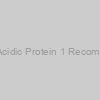 Proline-Rich Acidic Protein 1 Recombinant Protein |
|
91-734 |
ProSci |
0.05 mg |
EUR 651.3 |
|
Description: Proline-rich acidic protein 1, also known as Uterine-specific proline-rich acidic protein, UPA and PRAP1, is a secreted protein. PRAP1 is abundantly expressed in the epithelial cells of the liver, kidney, gastrointestinal tract and cervix. PRAP1 is up-regulated by butyrate, trichostatin A and 5'-aza-2' deoxycytidine. PRAP1 may play an important role in maintaining normal growth homeostasis in epithelial cells. PRAP1 is suppressed through epigenetic mechanisms involving histone deacetylation and methylation. PRAP1 has been shown to cause cell growth inhibition in cancer cell lines. |
) Recombinant Escherichia coli Acidic protein msyB(msyB) |
|
AP78016 |
SAB |
each |
Ask for price |
|
|
) Recombinant Escherichia coli Acidic protein msyB (msyB) |
|
CSB-BP340725ENV |
Cusabio |
160 mg |
Ask for price |
) Recombinant Escherichia coli Acidic protein msyB (msyB) |
|
RPC20673-100ug |
Biomatik Corporation |
100ug |
EUR 1463 |
) Recombinant Escherichia coli Acidic protein msyB (msyB) |
|
RPC20673-20ug |
Biomatik Corporation |
20ug |
EUR 580.8 |
) Recombinant Human Cryptochrome-1 (CRY1) |
|
CSB-EP621957HU |
Cusabio |
3785 mg |
Ask for price |
) Recombinant Human Cryptochrome-2 (CRY2) |
|
CSB-EP673229HU |
Cusabio |
3900 mg |
Ask for price |
) Recombinant Mouse Cryptochrome-2 (Cry2) |
|
CSB-EP874173MO |
Cusabio |
11109 mg |
Ask for price |
) Recombinant Human Cryptochrome-2 (CRY2) |
|
CSB-BP673229HU |
Cusabio |
206 mg |
Ask for price |
) Recombinant Mouse Glial fibrillary acidic protein (Gfap) |
|
CSB-YP009369MO |
Cusabio |
5676 mg |
Ask for price |
) Recombinant Human Glial fibrillary acidic protein (GFAP) |
|
CSB-EP009369HU |
Cusabio |
9556 mg |
Ask for price |
) Recombinant Human Glial fibrillary acidic protein (GFAP) |
|
CSB-EP009369HUa0 |
Cusabio |
9893 mg |
Ask for price |
) Recombinant Mouse Glial fibrillary acidic protein (Gfap) |
|
CSB-EP009369MO |
Cusabio |
1246 mg |
Ask for price |
) Recombinant Mouse Glial fibrillary acidic protein (Gfap) |
|
CSB-EP009369MOb1 |
Cusabio |
9368 mg |
Ask for price |
) Recombinant Mouse Glial fibrillary acidic protein(GFAP) |
|
AP73715 |
SAB |
each |
Ask for price |
|
|
) Recombinant Mouse Glial fibrillary acidic protein(Gfap) |
|
AP70333 |
SAB |
1mg |
EUR 2826 |
|
|
) Recombinant Mouse Glial fibrillary acidic protein (Gfap) |
|
CSB-BP009369MOe1 |
Cusabio |
10145 mg |
Ask for price |
) Recombinant Mouse Glial fibrillary acidic protein (Gfap) |
|
RPC20041-100ug |
Biomatik Corporation |
100ug |
EUR 572 |
) Recombinant Mouse Glial fibrillary acidic protein (Gfap) |
|
RPC20041-1mg |
Biomatik Corporation |
1mg |
EUR 2884.7 |
) Recombinant Mouse Glial fibrillary acidic protein (Gfap) |
|
RPC20041-20ug |
Biomatik Corporation |
20ug |
EUR 353.4 |
 Recombinant Cryptosporidiumn Antigen |
|
E41H059 |
EnoGene |
100ug |
EUR 395 |
) Recombinant Human 60S acidic ribosomal protein P0 (RPLP0) |
|
CSB-YP020336HU |
Cusabio |
5971 mg |
Ask for price |
) Recombinant Human 60S acidic ribosomal protein P0 (RPLP0) |
|
CSB-EP020336HU |
Cusabio |
2094 mg |
Ask for price |
) Recombinant Mouse 60S acidic ribosomal protein P0 (Rplp0) |
|
CSB-EP020336MO |
Cusabio |
2095 mg |
Ask for price |
) Recombinant Human 60S acidic ribosomal protein P1 (RPLP1) |
|
CSB-EP020340HU |
Cusabio |
2096 mg |
Ask for price |
) Recombinant Human 60S acidic ribosomal protein P2 (RPLP2) |
|
CSB-EP020342HU |
Cusabio |
2097 mg |
Ask for price |
) Recombinant Human 60S acidic ribosomal protein P0(RPLP0) |
|
AP72761 |
SAB |
1mg |
EUR 2303 |
|
|
) Recombinant Human 60S acidic ribosomal protein P1(RPLP1) |
|
AP73924 |
SAB |
1mg |
EUR 1978 |
|
|
) Recombinant Mouse 60S acidic ribosomal protein P0(Rplp0) |
|
AP76659 |
SAB |
1mg |
EUR 2826 |
|
|
) Recombinant Human 60S acidic ribosomal protein P2(RPLP2) |
|
AP77752 |
SAB |
1mg |
EUR 1978 |
|
|
) Recombinant Human 60S acidic ribosomal protein P0(RPLP0) |
|
AP70728 |
SAB |
1mg |
EUR 1978 |
|
|
) Recombinant Human 60S acidic ribosomal protein P0 (RPLP0) |
|
RPC21947-100ug |
Biomatik Corporation |
100ug |
EUR 460.9 |
) Recombinant Human 60S acidic ribosomal protein P0 (RPLP0) |
|
RPC21947-1mg |
Biomatik Corporation |
1mg |
EUR 2237.8 |
) Recombinant Human 60S acidic ribosomal protein P0 (RPLP0) |
|
RPC21947-20ug |
Biomatik Corporation |
20ug |
EUR 258.7 |
) Recombinant Mouse 60S acidic ribosomal protein P0 (Rplp0) |
|
RPC20455-100ug |
Biomatik Corporation |
100ug |
EUR 572 |
) Recombinant Mouse 60S acidic ribosomal protein P0 (Rplp0) |
|
RPC20455-1mg |
Biomatik Corporation |
1mg |
EUR 2884.7 |
) Recombinant Mouse 60S acidic ribosomal protein P0 (Rplp0) |
|
RPC20455-20ug |
Biomatik Corporation |
20ug |
EUR 353.4 |
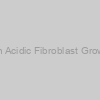 Recombinant Human Acidic Fibroblast Growth Factor, 2-155a.a. |
|
AP60052 |
SAB |
100ug |
EUR 449 |
|
|
 Recombinant Human Secreted Protein Acidic & Rich in Cysteine |
|
7-06505 |
CHI Scientific |
10µg |
Ask for price |
 Recombinant Human Secreted Protein Acidic & Rich in Cysteine |
|
7-06506 |
CHI Scientific |
50µg |
Ask for price |
 Recombinant Human Secreted Protein Acidic & Rich in Cysteine |
|
7-06507 |
CHI Scientific |
1mg |
Ask for price |
) Recombinant Human Fibroblast Growth Factor- acidic (rHu aFGF ) |
|
70401 |
SAB |
50ul |
EUR 235 |
|
|
|
Description: Fully biologically active when compared to standard. The ED50 as determined by a cell proliferation assay using murine balb/c 3T3 cells is less than 0.5 ng/ml, corresponding to a specific activity of > 2.0 × 106 IU/mg in the presence of 10 μg/ml of heparin. |
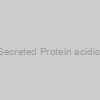 Secreted Protein acidic & Rich in Cysteine Human Recombinant |
|
rAP-4408 |
Angio Proteomie |
Inquiry |
Ask for price |
) Recombinant Danio rerio Glial fibrillary acidic protein (gfap) |
|
CSB-EP009369DIL |
Cusabio |
1245 mg |
Ask for price |
) Recombinant Danio rerio Glial fibrillary acidic protein(gfap) |
|
AP77303 |
SAB |
each |
Ask for price |
|
|
) Recombinant Danio rerio Glial fibrillary acidic protein (gfap) |
|
RPC28172-100ug |
Biomatik Corporation |
100ug |
EUR 765.5 |
) Recombinant Danio rerio Glial fibrillary acidic protein (gfap) |
|
RPC28172-1mg |
Biomatik Corporation |
1mg |
EUR 2959.2 |
) Recombinant Danio rerio Glial fibrillary acidic protein (gfap) |
|
RPC28172-20ug |
Biomatik Corporation |
20ug |
EUR 448.1 |
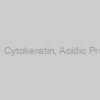 Recombinant Human Cytokeratin, Acidic Protein, His, Yeast-1mg |
|
QP7778-ye-1mg |
EnQuireBio |
1mg |
EUR 2262 |
) Recombinant Human Dentin matrix acidic phosphoprotein 1 (DMP1) |
|
CSB-YP006967HU |
Cusabio |
5620 mg |
Ask for price |
) Recombinant Pongo abelii Glial fibrillary acidic protein (GFAP) |
|
CSB-EP009369PYX |
Cusabio |
10997 mg |
Ask for price |
) Recombinant Human Dentin matrix acidic phosphoprotein 1(DMP1) |
|
AP77645 |
SAB |
each |
Ask for price |
|
|
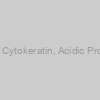 Recombinant Human Cytokeratin, Acidic Protein, His, Yeast-10ug |
|
QP7778-ye-10ug |
EnQuireBio |
10ug |
EUR 283.2 |
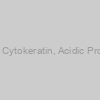 Recombinant Human Cytokeratin, Acidic Protein, His, Yeast-50ug |
|
QP7778-ye-50ug |
EnQuireBio |
50ug |
EUR 358.8 |
, partial) Recombinant Human Glial fibrillary acidic protein (GFAP), partial |
|
CSB-EP009369HU(A4) |
Cusabio |
9167 mg |
Ask for price |
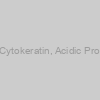 Recombinant Human Cytokeratin, Acidic Protein, His, Yeast-100ug |
|
QP7778-ye-100ug |
EnQuireBio |
100ug |
EUR 576 |
 Recombinant Human Cytokeratin, Acidic Protein, His, Yeast-200ug |
|
QP7778-ye-200ug |
EnQuireBio |
200ug |
EUR 892.8 |
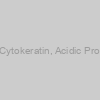 Recombinant Human Cytokeratin, Acidic Protein, His, Yeast-500ug |
|
QP7778-ye-500ug |
EnQuireBio |
500ug |
EUR 1447.2 |
) Recombinant Acidic Salivary Proline Rich Phosphoprotein 2 (PRH2) |
|
RPD812Hu01 |
Cloud-Clone |
10ug |
EUR 172 |
) Recombinant Acidic Salivary Proline Rich Phosphoprotein 2 (PRH2) |
|
4-RPD812Hu01 |
Cloud-Clone |
-
Ask for price
-
Ask for price
-
Ask for price
-
Ask for price
-
Ask for price
-
Ask for price
-
Ask for price
|
- 100 ug
- 10ug
- 1 mg
- 200 ug
- 500 ug
- 50ug
- 5 mg
|
|
|
|
Description: Recombinant Human Acidic Salivary Proline Rich Phosphoprotein 2 expressed in: E.coli |
) Recombinant Phosphofurin Acidic Cluster Sorting Protein 2 (PACS2) |
|
RPF706Mu01 |
Cloud-Clone |
10ug |
EUR 140 |
) Recombinant Phosphofurin Acidic Cluster Sorting Protein 2 (PACS2) |
|
RPU57433-100ug |
Biomatik Corporation |
100ug |
EUR 470.4 |
) Recombinant Phosphofurin Acidic Cluster Sorting Protein 2 (PACS2) |
|
RPU57433-1mg |
Biomatik Corporation |
1mg |
EUR 2184 |
) Recombinant Phosphofurin Acidic Cluster Sorting Protein 2 (PACS2) |
|
RPU57433-50ug |
Biomatik Corporation |
50ug |
EUR 385 |
) Recombinant Acidic Salivary Proline Rich Phosphoprotein 2 (PRH2) |
|
RPU52682-100ug |
Biomatik Corporation |
100ug |
EUR 530.2 |
) Recombinant Acidic Salivary Proline Rich Phosphoprotein 2 (PRH2) |
|
RPU52682-1mg |
Biomatik Corporation |
1mg |
EUR 2347.8 |
) Recombinant Acidic Salivary Proline Rich Phosphoprotein 2 (PRH2) |
|
RPU52682-50ug |
Biomatik Corporation |
50ug |
EUR 425.7 |
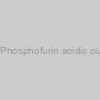 Recombinant human Phosphofurin acidic cluster sorting protein 2 |
|
P2696 |
FN Test |
100ug |
Ask for price |
|
|
|
Description: Recombinant protein for human Phosphofurin acidic cluster sorting protein 2 |
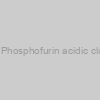 Recombinant human Phosphofurin acidic cluster sorting protein 1 |
|
P2221 |
FN Test |
100ug |
Ask for price |
|
|
|
Description: Recombinant protein for human Phosphofurin acidic cluster sorting protein 1 |
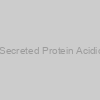 Recombinant Human Secreted Protein Acidic and Rich in Cysteine |
|
AP60450 |
SAB |
100ug |
EUR 449 |
|
|
, partial) Recombinant Human 60S acidic ribosomal protein P2 (RPLP2), partial |
|
CSB-RP023544h |
Cusabio |
5122 mg |
Ask for price |
This assessment primarily focuses on efforts to raised perceive the molecular interplay between host pathogens from each views, in addition to the resistance genes, metabolomic modifications, quantitative trait loci with potential for enchancment in illness resistance and host genome manipulation through transgenic approaches, and it additional identifies analysis gaps and supplies solutions for future analysis priorities.


